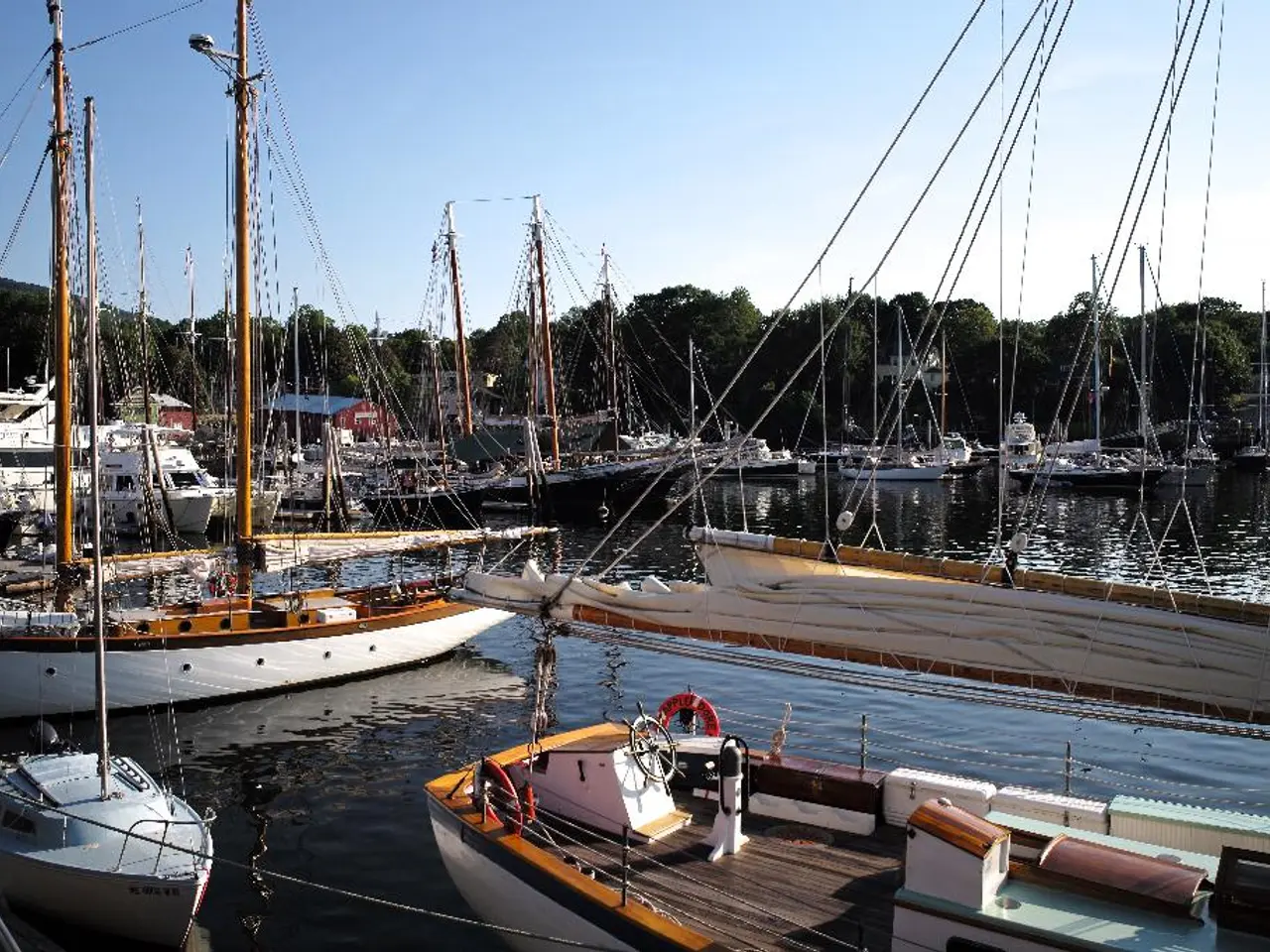Barcelona Overstating Its Credentials but Holding Top Spot in European Progression: Shift in Strategy?
Barcelona Takes Steps to Limit Cruise Tourism Growth
Barcelona, one of Europe's busiest cruise ports, is taking significant steps to manage its cruise ship traffic and mitigate the impact of overtourism on the city. The Barcelona City Council, in agreement with the Port, has decided to reduce the number of cruise terminals from seven to five by 2030 [1][2].
In 2024, the Port of Barcelona welcomed over 3.65 million cruise passengers, accounting for nearly one-third of Spain’s total cruise passengers [1][2][3]. However, the city has been grappling with the challenges posed by overtourism, including infrastructure strain and pressure on local residents.
The reduction plan includes the demolition of terminals A, B, and C, and the construction of a new public terminal with a capacity of 7,000 passengers. This modern terminal will be part of a larger port overhaul, with an investment of €185 million [2]. Additional funds will be allocated for infrastructure improvements to further modernise the port.
Despite the planned reduction, cruise ship traffic in Barcelona continues to rise. In the first five months of 2025, cruise ship calls increased by 21% compared to the same period in 2024, with passenger numbers up 20% to 1.2 million [1][2].
Barcelona's approach to cruise tourism is relatively unique, as it formally imposes hard caps on cruise passenger volumes. Many other ports have either expanded capacity or maintained growth to attract tourism revenue [1][4]. By contrast, Barcelona's move reflects growing political and social pressure in popular cruise destinations to balance tourism with urban sustainability and resident quality of life.
Other major ports, such as Miami in Florida (USA), continue to see growth in cruise traffic. Miami, for instance, welcomed 8.2 million cruise passengers between October 2023 and September 2024 [1].
Professor Daniel Imbert-Bouchard, an expert in tourism management, welcomes the measures taken by Barcelona but warns that the effects will not be immediate [5]. He emphasises the importance of continuous monitoring and adjustment of policies to ensure the long-term sustainability of the city.
In summary, while Barcelona remains a top global cruise destination, its future outlook involves controlled capacity with a focus on sustainability and resident quality of life, contrasting with many other major ports that continue expanding cruise tourism without strict caps [1][2][4].
| Aspect | Barcelona (Current & Future) | Other Major Ports (General) | |------------------------------|-------------------------------------------------------|-------------------------------------------------| | Cruise passengers (2024) | ~3.65 million | Varies, some growing or stable | | Terminals (2025) | 7 terminals | Often more or expanding | | Terminal plan (2030) | Reduced to 5 terminals | Rarely reduced; often expanded | | Passenger capacity per day | From 37,000 down to 31,000 | Typically stable or increasing | | Investment | Large modernization and infrastructure improvements | Continued infrastructure growth | | Policy approach | Formal limits to reduce overtourism | Mostly focused on growth or ad hoc management | | Social impact focus | High, due to overtourism concerns | Varies, less formalized in limits |
[1] El País, "El Ayuntamiento y el Puerto de Barcelona acuerdan reducir el número de terminales de cruceros", 2025. [2] El Mundo, "El Ayuntamiento de Barcelona y el Puerto de Barcelona acuerdan reducir el número de terminales de cruceros", 2025. [3] AENA, "Estadísticas de pasajeros de cruceros", 2025. [4] The Guardian, "Barcelona to reduce number of cruise ship terminals to combat overtourism", 2025. [5] The Local, "Expert welcomes Barcelona's cruise tourism measures but warns of long-term impact", 2025.
The average number of cruise passengers in Barcelona is projected to decrease as the city plans to reduce the number of terminals from seven to five by 2030. To entertain the remaining cruisers, Barcelona is investing €185 million towards a modern terminal with a capacity of 7,000 passengers as part of a larger port overhaul.





